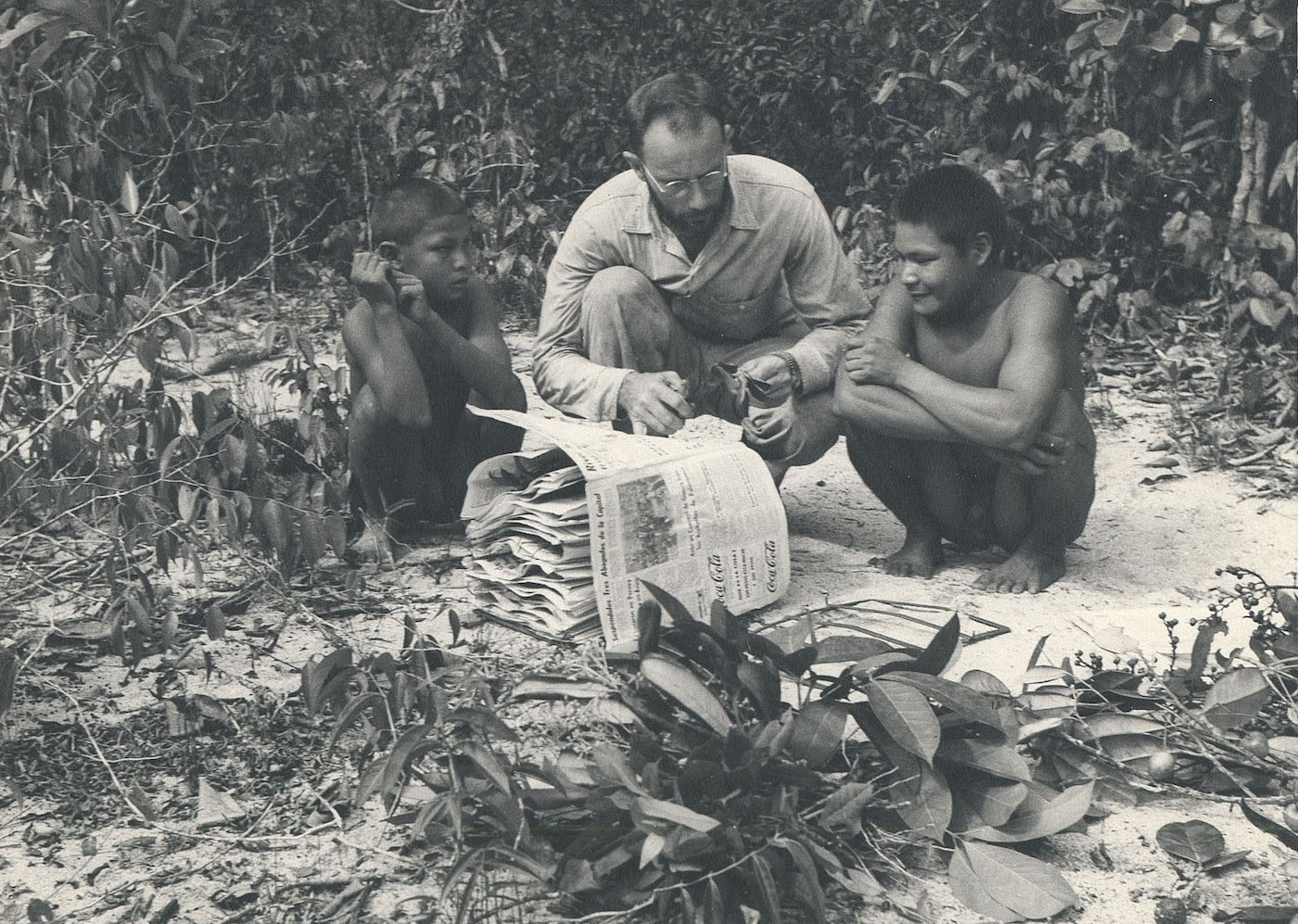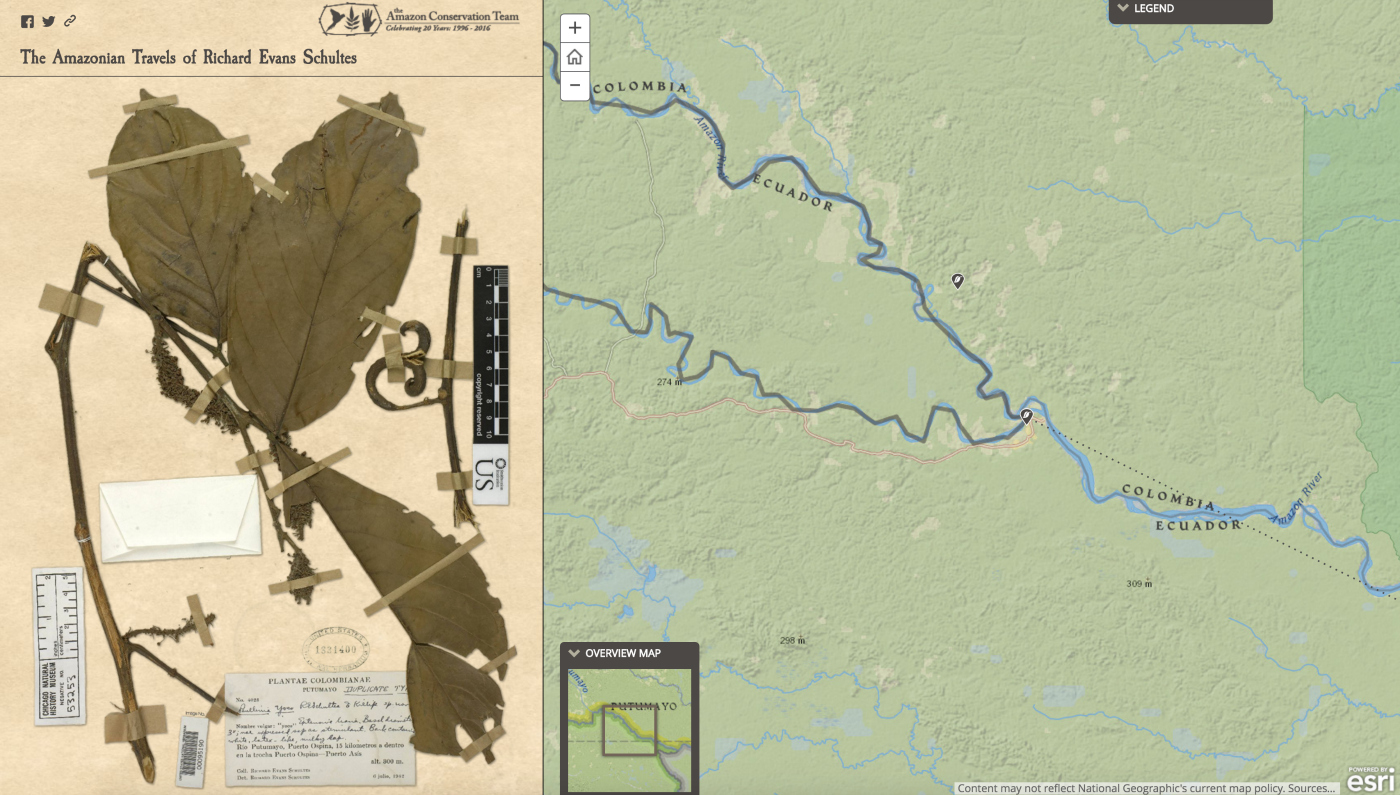
Richard Evans Schultes collecting plants with Maku assistants in 1952 (via Harvard University Herbaria)
Richard Evans Schultes took peyote with the Kiowa in Oklahoma in the 1930s, was the first scientist invited to a hallucinogenic yagé ceremony in the Amazon’s Sibundoy Valley in the 1940s, and inadvertently helped launch the psychedelic eraof the 1960s. The scientist and now widely proclaimed “father of ethnobotany” documented some 24,000 plant species in the Amazon and was dedicated to learning as much as possible from the indigenous people he encountered by treating them as equals. Unlike other American explorers, he didn’t carry a gun, andonce said, “I do not believe in hostile Indians. All that is required to bring out their gentlemanliness is reciprocal gentlemanliness.”

Richard Evan Schultes in the Amazon (1940) (viaHarvard University Herbaria & Libraries/Wikimedia) (click to enlarge)
You can delve into Schultes’s immersion in ritual and medicinal plants through the newly launched Amazonian Travels of Richard Evans Schultes, from the nonprofit Amazon Conservation Team (ACT), itself dedicated to working with indigenous people in the Amazon on ecological issues. The interactive map, powered by Esri, includes images of his plant samples as well as his documentary photographs. The latter were, until recently, an overlooked aspect of his work; most of them were only retrieved from his archives after his death in 2001, then published for the first time in Wade Davis’s 2004 book The Lost Amazon and highlighted in a 2008 exhibition at the Smithsonian’s National Museum of Natural History. Entering the Amazon in 1941 and remaining mostly in the field for over a decade, Schultes documented a culture that was disappearing, especially in the once isolated northwest area bordered by the Andes. He later became one of the first voices calling for conservation of this region.
In these forests, he researched the borrachero — or “tree of the evil eagle” — and its medicinal uses, as well as the arrow poisons made from curare in the Kofán territory that would support the development of muscle relaxants in surgery. While his publications on mind-altering botanicals inspired authors like Aldous Huxley and William S. Burroughs, he wasn’t thrilled by their recreational enjoyment of the plants. He responded to Burroughs’s wild description of a yagé trip by saying, “That’s funny, Bill, all I saw was colors.”
The Amazonian Travels of Richard Evans Schultes was created by cartographer Brian Hettler and ethnobotanist Mark Plotkin, who’s also president of ACT. Plotkin was himself a student of Schultes, who taught for a long time at Harvard University; he was famous for the undergraduate courses in which he demonstrated how to properly fire a blowgun. Through the interactive map, you can experience some of his journey and see images of a midcentury Amazon through his scientific lens.

The Amazonian Travels of Richard Evans Schultes (screenshot by the author for Hyperallergic)

The Amazonian Travels of Richard Evans Schultes (screenshot by the author for Hyperallergic)

The Amazonian Travels of Richard Evans Schultes (screenshot by the author for Hyperallergic)

The Amazonian Travels of Richard Evans Schultes (screenshot by the author for Hyperallergic)
No comments:
Post a Comment